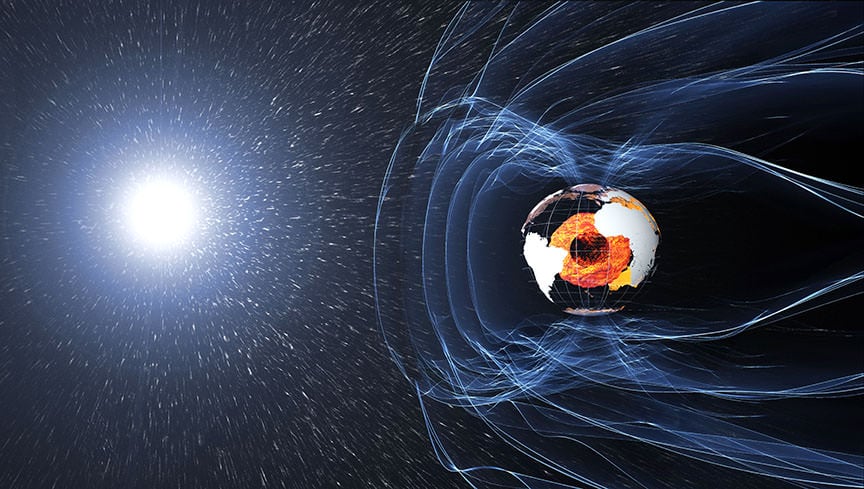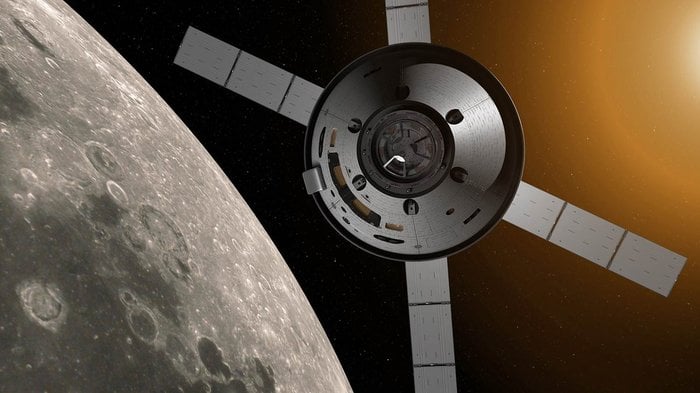
An international team of astronomers recently used deep learning to identify patterns in images of galaxies taken by the Hubble Space Telescope
Continue reading

Continue reading

In a new paper, two professors consider what we have learned from studying Earth from space, and how this might allow us to find an Earth 2.0.
Continue reading

Continue reading

An international team of scientists has developed the DARKNESS camera, which will allow astronomers to directly study planets around nearby stars.
Continue reading

The ESA's Swarm satellites recently began monitoring Earth's oceans to determine how they contribute to Earth's magnetic field
Continue reading

According to two new papers submitted by a Harvard Professor and an independent scientists, extra-terrestrials might have a hard time getting out into space.
Continue reading

A new study provides evidence of a so-called lost planet that was formed in the early days of the Solar System, and subsequently destroyed in a collision.
Continue reading

A SpaceX Falcon 9 rocket blasted off from Cape Canaveral today, carrying NASA's Transiting Exoplanet Survey Satellite into space. This is a changing of the guard as we say goodbye to Kepler and welcome this newest planet hunter into the skies, ready to help us find another Earth.
Continue reading

Elon Musks hints in a tweet that SpaceX wants to use "giant party balloons" to retrieve upper stage rockets.
Continue reading

Continue reading

A pair of scientists who were part of the first gravitational wave discovery have developed a way to listen to the background noise of the Universe to detect thousands more.
Continue reading

Next year, Randy Chung and Sean League of Space Fab will be launching the world's first space telescope that will be accessible to everyone!
Continue reading

Aurora Station will be the first luxury hotel in space. The station will be open for business in 2022.
Continue reading

Continue reading

According to a new study by a team of researchers, it is possible that we might find evidence of another industrial civilization in the geological record
Continue reading

Continue reading

New images from the European Southern Observatory show the stunning variety of discs of gas and dust that surround young stars.
Continue reading

The IAU just approved of a dozen names for features on Pluto's moon Charon, which include mountains named after Octavia Butler and Sir Arthur C. Clarke.
Continue reading

When humans try to live on the Moon and Mars, they're going to need protection from the harsh environments. Fortunately, there are ready-made homes on these worlds: lava tubes.
Continue reading

Want to make sure you don't kick the bucket before seeing the best the night sky has to offer? Then be sure to check out my new book: "Wonders of the Night Sky You Must See Before You Die."
Continue reading

According to a new study by an international team of astronomers, black hole mergers are common in globular star clusters
Continue reading

Elon Musk just released an Instagram post showing a key component of the upcoming BFR - the main body tool that will assemble the fuselage
Continue reading

Continue reading

Continue reading

Continue reading

Astrophotographer Damian Peach raised the alarm on Twitter this past week, of a possible bright storm emerging of the planet Saturn. The spot was noticeable even with the naked eye and in the raw video Peach captured, a sure sign that the storm was a biggie.
Continue reading

Continue reading

Continue reading

According to a new study, Proxima Centauri experiences superflare activity that would likely render its exoplanet (Proxima b) uninhabitable
Continue reading

Continue reading

Continue reading

A new study by a team of over 200 international scientists has revealed how a magnetar - a special class of neutron star - has awakened after three years of being dormant.
Continue reading

Continue reading

A new company is developing a hybrid rocket-balloon system to launch microsatellites cheaply from high altitude.
Continue reading

Using data from the Dark Energy Survey Supernova program, a team of astronomers recently found 72 supernovae, the largest number discovered to date
Continue reading

In partnership with Lockheed Martin, NASA has begun developing their quiet supersonic plane, a revolutionary aircraft that will generate quiet sonic booms
Continue reading

A new study by a team of international researchers shows how microbial life could exist in Venus' cloud tops, an idea suggested almost fifty years ago
Continue reading

Using the Hubble Space Telescope, a team of astronomers recently imaged the most distant star ever seen in a distant galaxy cluster
Continue reading

A team of research scientists recently conducted a series of simulations to see how the Orion Launch Abort System would fair in high speed conditions.
Continue reading

Using data from the ALMA array, a team of international astronomers was able to image a newly forming planetary system and predict the presence of a planet.
Continue reading

Continue reading

According to a statement made by the US Air Force, the reentry of the Tiangong-1 was confirmed over the Pacific Ocean on April 2nd.
Continue reading

Continue reading

According to the ESA's Space Debris Office, about 100 tonnes of space debris enters our atmosphere every year on average.
Continue reading

Continue reading

A team of international astronomers recently discovered a Super Earth with a similar composition of Mercury, and is several times hotter!
Continue reading

Using data from the Hubble Space Telescope and other ground-based observatories, a team of astronomers have found a galaxy that appears to have no dark matter.
Continue reading

According to updates by Tabetha Boyajian and her team, it appears that Tabby's Star recently experienced another major dip in brightness.
Continue reading

All across the world, space agencies and satellite trackers are predicting that China's Tiangong-1 space station will enter Earth's atmosphere around April Fool's Day.
Continue reading

 Universe Today
Universe Today













































